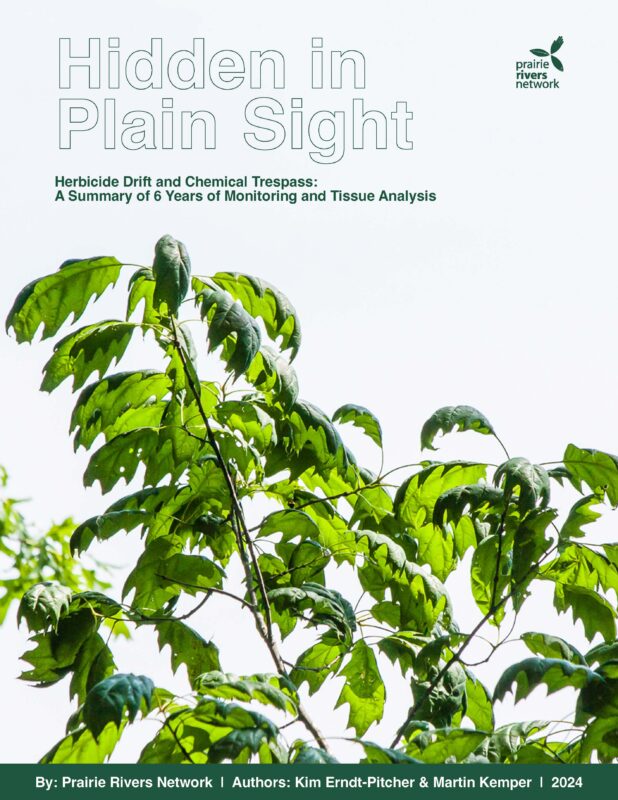Herbicide drift — the movement of toxic chemicals through the air to a non-target site — is damaging wild and cultivated plants and trees throughout Illinois, threatening human health, and impairing our ability to adapt to a changing climate. The sources of drift are primarily from Illinois’ massive agriculture industry, but they also include chemical lawn and turf treatments.
Over the past six years, Prairie Rivers Network has been monitoring symptoms of herbicide drift damage to non-target broadleaf plants and trees across rural and urban Illinois. Our Tree and Plant Health Monitoring Program has documented widespread symptoms of injuries year after year. More than 99% of the sites monitored exhibited symptoms every year.
We released these findings in the report, Hidden in Plain Sight, in July 2024. You can review the report here.
The report found:
- Nearly all (279 of 280) sites where monitoring was conducted had symptoms of herbicide damage.
- Every site monitored since 2019 had symptoms of herbicide damage.
- More than 90% of tissue samples tested (115 of 127) had detectable herbicide levels in them.
- Drift injuries were recorded each year at nearly every site with multiple visits (142 of 143 sites).
- All six sites located more than a mile from any potential source had detectable pesticide residues.
The consistent presence of symptoms across monitored regions indicates that exposure to herbicides is widespread and repeated exposures are playing a significant role in the decline of tree health in Illinois.
The impacts of drift — such as declining tree health and eventual death — have become evident during our six years of monitoring. These declines in tree health have also been observed and documented by managers of public lands, private landowners, and outdoor enthusiasts across Illinois, and much of the Midwestern and Southern United States.
Declining tree health triggers a cascading series of adverse impacts to our natural areas, public spaces, and home landscapes alike. The death of valuable trees like oaks causes financial, aesthetic, and psychological distress to property owners and communities.
The report shares stories of people who have been harmed. You can hear more from those people here.
The report outlined problems with the way pesticides are regulated in Illinois, finding that current safeguards are inadequate to protect people and the environment from harm.
Regulation and enforcement need to be modernized to address the threats posed by the current use and misuse of pesticides across our landscape.
Join us in asking Governor JB Pritzker to take action to stop the harm today.
Appreciate this work? More than 90% of funding for our herbicide drift monitoring work has come from individual donations, from people like you. Please consider supporting this work with a donation today.








